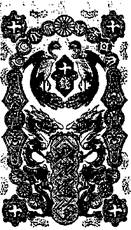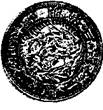home
 Economy Economy
 books books
 The history of the world economy - Polyak GB The history of the world economy - Polyak GB
|
The history of the world economy - Polyak GB
24.2. Japan's economy in the XIX century.
Beginning of the XIX century. Japan was marked by serious popular unrest caused by the crisis in agriculture. Statements were made by the peasants, their example was followed by the townspeople. However, the power of the shoguns remained steadfast and this was stimulated by the revival of Confucianism.
Causes of Japan lag
In the XIX century., As they were centuries ago, Confucianism has a real impact on the lifestyle of the Japanese so their values as a family castle, paternalism, respect for elders, the cult of ethical norms, the cult of learning and education, and others.
Reform 1830-1840 gg., Which tried during the reign of the twelfth shogun Ieёsi spend Mizuno Tadakuni were last attempt to strengthen the feudal system. They continued the previous reform was aimed at saving mode. So, we were issued a decree banning all sorts of excesses, up to tobacco smoking. Merchants heavily taxed. Was issued a decree on "observing the morals of society", attempts to establish control over the prices and return to the village of peasants who lived in the city.
In describing these reforms, Japanese historians say that they were pursuing not only the task of promoting the economy, improvement of customs regulation and finance. They also included the implementation of measures embodying the absolutist tendencies and designed to strengthen the central government. So, it was planned to establish jurisdiction over the territory of the government sёgunskogo around Edo, enter the direct control of wealthy merchants recently, appeared among the rural population. But this policy met with opposition in the different layers of society, and in 1843 Tadakuni was forced to resign. This meant the beginning of the crisis Tokugawa shogunate.
In the second half of the 40-ies of XIX century. the government was forced to abandon the policy of isolation of the country, in relations with other countries are having problems. The government and clans started intensive development of European art. But in his efforts, they were limited to military equipment necessary for the strengthening of military power. So, in 1848, Nabeshima clan began to cast cannon. Next to the production of military equipment and started the Satsuma clan, who built a metallurgical plant. The head of the clan Shimazu Nariakira - a prominent politician - before others took, the achievements of European civilization, its military and financial aid has a greater impact on public policy in the late Edo period. After removing the isolation of Japan and the opening of the ports of the clan with the help of England built a mechanized spinning mill. The Government, with the assistance of France, built in the shipyard Iokosuka.
In general, the first half of the XIX century. Japan 181 new factory was built. We began to apply some technical improvements, particularly in the mining and smelting of metal. Especially developed spinning and weaving, where the displacement of the guild craft was evident. In addition to textile manufactures any companies in the sugar, porcelain and pottery, pottery. With regard to the distribution of property, the majority of factories, particularly producing weapons belonged to great feudal lords and the state. On the state-owned manufactories used the labor of fugitive peasants.
The crisis of the feudal system. "The opening of Japan"
The middle of the XIX century - one of the most dramatic periods in the history of Japan. shoguns of the Tokugawa regime, more than two and a half centuries to keep the country in the grip of the feudal system crashed. With his fall the population is bound to improve the lives of hope, but the rulers had other plans: they wanted in the shortest possible time to turn the country into a strong military and economic power relations.
At the same time there were other processes: easing Shoguns took advantage of some wealthy principality flourished due to smuggling and, as shown above, to develop their own industry.
In addition, in the middle of the XIX. is "opening of Japan" by the European powers and the United States. 200 years, Japan has avoided contacts with the West. Self-isolation came to an end July 8, 1853, when the Tokyo harbor appeared squadron US ships. The commander of the squadron Kolbrayt Matthew Perry demanded that Japan open its ports to American trade. In 1854 he was awarded an unequal treaty with Japan, the United States on opening the ports of Shimoda and Hakodate to American ships. This was followed by agreements with other countries, which led to the inclusion of Japan in the world market. One of the consequences of such an agreement - flooding the country American goods - a negative impact on the Japanese manufacturing: Japanese raw materials and foodstuffs were exported for a pittance. Country coverage and antiinostrannye antisёgunskie unrest, which involved the broad masses of peasants and townspeople, commercial and industrial bourgeoisie of the aristocracy and feudal lords - the opposition. The Civil War.
The revival of the idea of imperial power
As a last resort the authorities resort to ideology. To appease his subjects, so they agreed to tolerate, the authorities decided to instill the idea that would justify deprivation borne by them, to disciplined and mobilized on the accomplishments of the goal name. This is the idea of filial devotion to the Emperor. It has long been forgotten emperor turns into a national patriotic symbol of the country. Born ideology based on filial devotion to the Emperor, whose power is sanctified by his divine origin. This concept of "unique Japanese national essence", Japanese apology as a "country of the gods."
This idea formed the basis of the authorities to introduce the official cult, which later received the name of the State Shinto. Japanologists emphasize that this idea has no place for the individual, it gives a person only the right (it is also the duty!) - To be loyal subjects of the emperor adored, and if need be, die for him. Once established, this idea later played an important role in the creation of "Japanese economic miracle".
Meiji Revolution (1867-1868gg.)
In 1868 Imperial rule was restored. At the head of Japan - 16-year-old Emperor Mutsihito. His reign was called the Meiji, ie enlightened rule. In fact, this was a period of important political events and socio-economic transformation. Therefore, the Meiji revolution is considered a bourgeois revolution 1867-1868 gg., Who brought Japan to the level of world powers. The young emperor surrounded himself with skillful ministers and advisers, in the first year, he moved the capital of Japan from Kyoto to Edo, renamed Tokyo, and began to implement a program of reforms.
The main socio-economic and political transformation:
1) completion of the unification of the state. feudal principalities and established the prefecture have been eliminated; the formation of a centralized state - the decisive factor in Japan's transformation into a powerful world power;
2) abolished the feudal system, feudal rights and the Princes of the samurai; Decree 1869 obliged the lords to transfer their holdings to the emperor;
3) the abolition of all government restrictions on employment and occupation, liquidated guild system, guilds and clans;
4) abolished social class inequalities in economic activity, proclaimed freedom of trade and movement within the country;
5) established a new class division of society. If the first four classes were, it is now three. The nobility constituted the upper class (it included the former feudal princes, the court aristocracy). The second class - the nobility (all former samurai). And the third - the class of the common people. Attributed to him the other layers of the population, including commercial and industrial bourgeoisie;
6) removed all internal customs, introduced a single currency (the price of a gold backing). *
* B 1870 Emperor Mutsihito replace traditional coin shoguns on the dollar with the dragon. The Japanese yen the dollar was called ( "round coin *) and cents - in September.

Desyatisenovaya bill 1872

Japanese dollar
Of course, these measures have contributed to the formation of the Japan single market, a single economic space.
Nevertheless it considered incomplete revolution. The new political regime defended the interests of the landowners, but was allowed to power and the bourgeoisie. Top government positions were given courtiers. The reforms were carried out and the dual nature gradually. Feudal elements are not subjected to immediate breaking, and adapted to the new economic conditions.
agrarian reform
In 1872-1873 gg. agrarian reform was carried out in Japan. She was supposed to solve the problem of the elimination of feudal tenure, the formation of new land owners. Formally, the land without compensation was fixed on those of private property rights, who disposed of it in fact. Farmers, hereditary holders of land plots have become their owners.
To enable the daimyo and samurai in entrepreneurial activity (industry, banking, trade, agriculture), the Japanese government has gone to the "capitalization of pensions", which consisted in a one-time payment of pensions for the next few years (half - cash, half - government bonds). Despite the protests of the samurai, this measure in 1876, was declared mandatory. The amount of money equal to the payment of pensions for 5-14 years.
In 1873 he was introduced land tax - the main source of the state budget. It applies to all landowners. Its size has reached 50% of the crop has been removed from the land.

Planting of rice
Thus in Japan it was legalized private ownership of land; it allowed free sale and purchase, new categories of land owners; former land owners were given opportunities for entrepreneurship. All this created conditions for capitalist forms of production.
However, the majority - peasants - had not been able to do so, since a considerable amount of land they lost. Part of the communal land was the emperor. Send to "new landlords' land which were leased or pledged to reform the peasants. Therefore, most of the farms remained or without land, or land-poor and had to rent it to the harsh conditions. Thus, in the village remained semi-feudal relations, as also reflected by the incompleteness of the revolution.


Comments
Commenting, keep in mind that the content and the tone of your messages can hurt the feelings of real people, show respect and tolerance to his interlocutors, even if you do not share their opinion, your behavior in terms of freedom of speech and anonymity offered by the Internet, is changing not only virtual, but real world. All comments are hidden from the index, spam control.